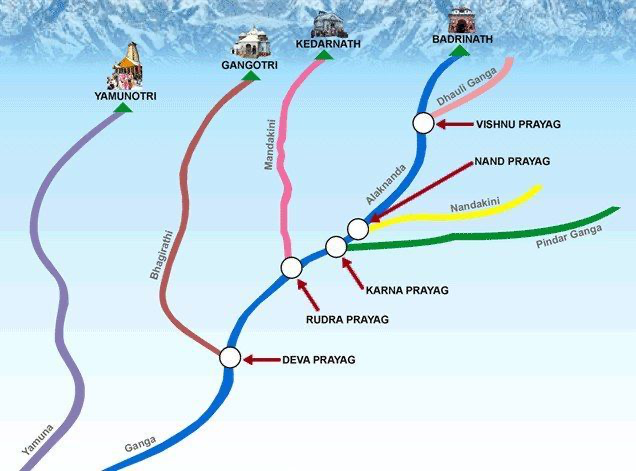Description

Disclaimer: Copyright infringement not intended.
Context
Nandakini River's water level rose above the danger mark
Details
- The Nandakini River's water level crossed the danger mark in the Nandanagar area, Chamoli, Uttarakhand, due to incessant rainfall.
- River water entered houses, leading residents to evacuate and find shelter in safer areas.
- Vehicles buried under debris from mountain slides on the Badrinath highway in Mayapur due to heavy downpour. No casualties reported.
Red Alert and Meteorological Warning
- The Indian Meteorological Department issued a red alert for Uttarakhand on August 13 and 14.
- Heavy to very heavy rainfall, reaching extremely heavy levels, forecasted for the mentioned dates.
- IMD's warning emphasized the need for safety precautions.
Current Conditions and Impact
- Several districts of the state experienced heavy rain for several days, resulting in waterlogging, flooding, and disruption of normal life.
- People faced difficulties and challenges due to the ongoing heavy rainfall and its consequences.

About Nandakini River
- The Nandakini River is a prominent watercourse flowing through the state of Uttarakhand in northern India.
- Originating from the Nanda Devi Mountain, this river traverses a picturesque landscape and plays a vital role in the ecology and livelihoods of the region.
Source and Origin
- The Nandakini River originates from the Nanda Devi Mountain, the second-highest peak in India, located in the Garhwal Himalayas.
- Glacial meltwater and springs contribute to the river's initial formation, giving it a pristine and freshwater source.
Course and Route
- The river flows in a generally southeasterly direction, passing through scenic valleys, forests, and quaint villages.
- It crosses important towns and locations like Ghat, Nandprayag, and Chamoli, further enhancing the river's significance for local communities.
Confluence and Tributaries
- The Nandakini River eventually merges with the Alaknanda River at Nandprayag, a confluence that holds cultural and religious importance.
- The river is fed by several tributaries, such as the Gauriganga and Madhyamaheshwar Ganga, which contribute to its flow and overall ecosystem.
Religious and Cultural Significance
- The Nandakini River is associated with various myths and legends, contributing to its revered status in local Hindu culture.
- Pilgrims and tourists often visit the river's banks and nearby locations as part of religious journeys and spiritual activities.
Vulnerability to Natural Events
- The Nandakini River, like other Himalayan rivers, is vulnerable to natural events such as heavy rainfall, glacial melt, and landslides.
- The region's topography and weather patterns can lead to sudden changes in water levels and the potential for flash floods.
Environmental and Ecological Impact
- The river supports a diverse range of plant and animal species, contributing to the region's biodiversity and ecosystem health.
- Its water is essential for irrigation and sustains agricultural practices in the surrounding areas.
Tourism and Recreation
- The scenic beauty and serene landscapes along the Nandakini River attract tourists and adventure enthusiasts.
- Activities such as trekking, camping, and nature exploration are popular along its course, boosting local tourism.
Management and Conservation
- The Nandakini River's ecosystem requires careful management and conservation efforts to ensure its sustainable use.
- Conservation initiatives aim to preserve the river's natural state and minimize human impact while supporting local communities.
Recent Events and Impact
- The river's water level crossing the danger mark in specific areas, as mentioned in previous discussions, highlights the impact of heavy rainfall on the Nandakini River and its surroundings.
|
PRACTICE QUESTION
Q) Which of the following statements about the Nandakini River in Uttarakhand, India, is/are correct?
A) The Nandakini River originates from the Gangotri Glacier.
B) The Nandakini River merges with the Alaknanda River at Nandprayag.
C) It flows in a northwesterly direction through the state of Uttarakhand.
D) The Nandakini River primarily serves as a source of hydropower generation.
Answer: B
|

https://news.abplive.com/states/up-uk/uttarakhand-s-nandakini-river-swells-after-heavy-rain-water-enters-houses-in-chamoli-abp-live-english-news-1622823











